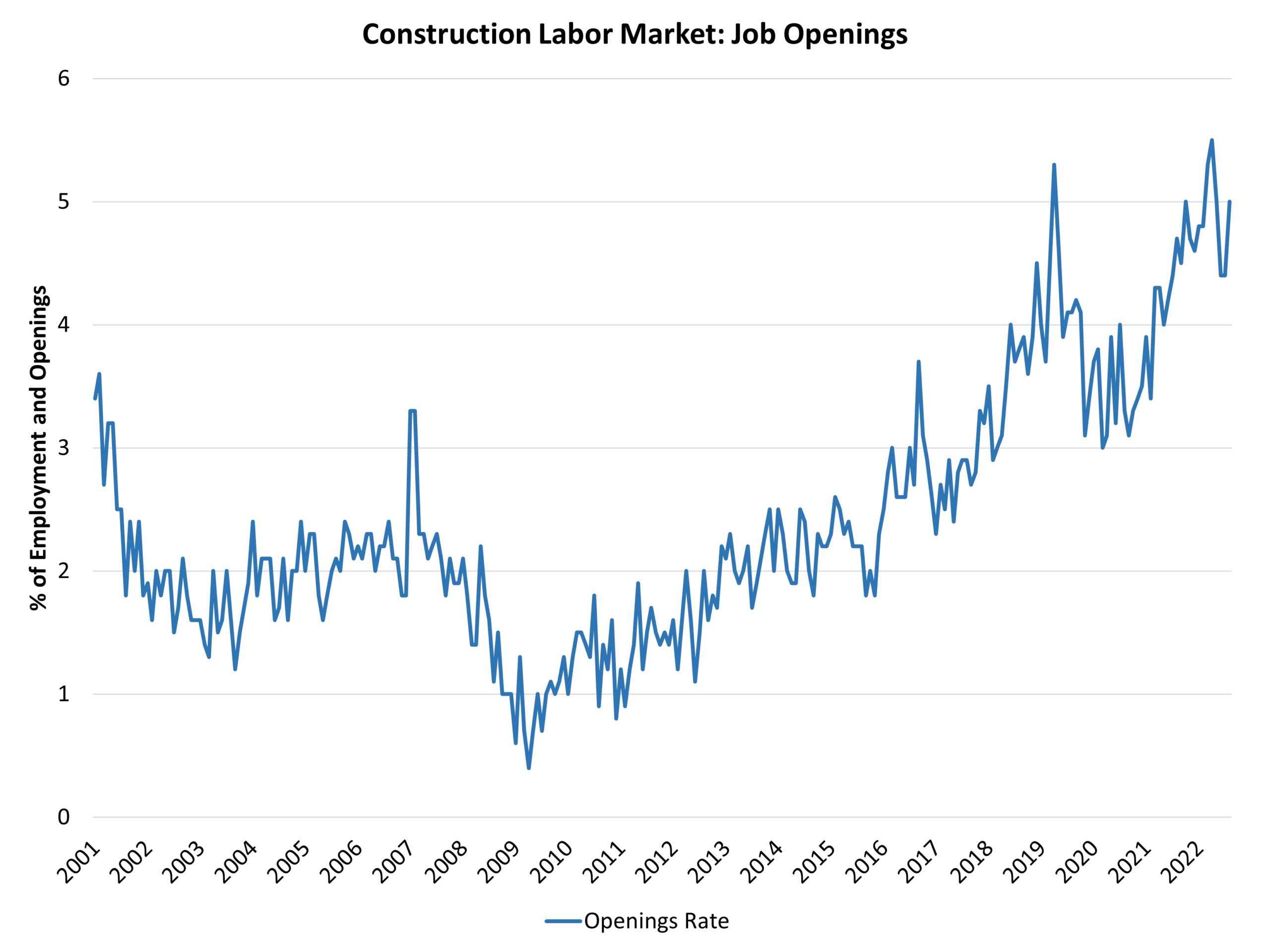The count of open, unfilled jobs for the overall economy fell 10% in August, declining from from almost 11.2 million to 10.05 million. The decline for open jobs reflects the beginnings of a labor market retreat as the economy slows due to aggressive tightening of monetary policy by the Fed.
While the economy continues to face a critical skilled labor shortage, particularly in sectors like construction, today’s data is an additional argument in favor of the Fed slowing its projected path of increasingly restrictive policy following its November meeting. Higher interest rates are having an impact on the demand-side of the real economy, which will be reflected in inflation data in future months. The ultimate solution for the labor shortage, however, will not be found by slowing demand, but by recruiting, training and retaining skilled workers.
The construction labor market is also generally cooling off as economic activity slows in response to tighter monetary policy. However, the August data shows stability concerning the number of open, unfilled jobs in the construction industry. Nonetheless, this trend will likely weaken during the latter part of 2022 due to the policy decisions by the Federal Reserve.
The count of open construction jobs ticked higher, rising from 353,000 in July to 407,000 in August. Despite recent slowing housing data, this is actually higher than the estimate from a year ago (362,000).
The construction job openings rate moved higher, increasing to 5% in August after 4.4% in July. The data series high rate of 5.5% was recorded in April.

The housing market remains underbuilt and requires additional labor, lots and lumber and building materials to add inventory. However, the market is slowing due to higher interest rates. Nonetheless, hiring in the construction sector remained solid at a 4.8% rate in August. The post-virus peak rate of hiring occurred in May 2020 (10.4%) as a rebound took hold in home building and remodeling.
Despite slowing of building activity, construction sector layoffs remained low at a 1.6% rate in August. In April 2020, the layoff rate was 10.8%. Since that time however, the sector layoff rate has been below 3%, with the exception of February 2021 due to weather effects.
The number of quits in construction in August (229,000) was slightly higher relative to the measure a year ago (189,000).
Looking forward, attracting skilled labor will remain a key objective for construction firms in the coming years. However, while a slowing housing market will take some pressure off tight labor markets, the long-term labor challenge will persist beyond an ongoing macro slowdown.
Related


